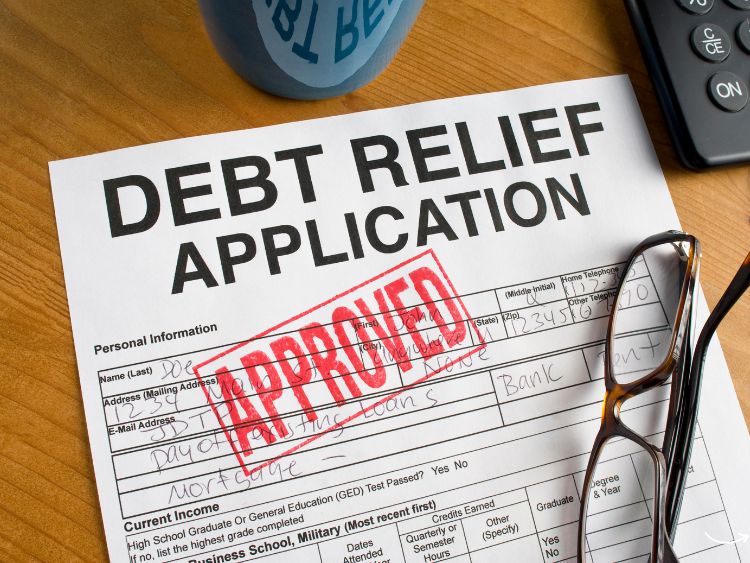Are you drowning in debt and unsure of how to navigate the murky waters of financial obligations? In California, debt relief programs offer a lifeline to individuals burdened by overwhelming debt. Whether you’re grappling with credit card debt, medical bills, or personal loans, understanding CA debt relief options could be the first step toward reclaiming your financial stability. Let’s dive into what CA debt relief entails and how it can help you chart a course toward financial freedom.
What is CA Debt Relief?
CA debt relief refers to various strategies and programs designed to help Californians reduce or eliminate their outstanding debts. These programs can range from debt consolidation and debt settlement to bankruptcy and government assistance. The goal is to provide individuals with manageable repayment plans or significant reductions in their total debt, allowing them to regain control over their finances.
Types of CA Debt Relief Programs
When it comes to CA debt relief, there isn’t a one-size-fits-all solution. Different circumstances call for different approaches. Here’s a breakdown of the most common options:
1. Debt Consolidation
Debt consolidation involves combining multiple debts into a single loan with a lower interest rate. This makes it easier to manage monthly payments and can reduce the total amount of interest paid over time. It’s an excellent option for those with multiple high-interest debts, like credit card balances.
2. Debt Settlement
Debt settlement allows you to negotiate with creditors to reduce the amount you owe. Typically, a lump sum payment is made that’s less than the total debt, but it settles the obligation entirely. While this option can significantly reduce your debt, it may negatively impact your credit score.
3. Bankruptcy
For some, filing for bankruptcy might be the best—or only—option. Bankruptcy can discharge many types of unsecured debt, providing a fresh start. However, it comes with serious long-term consequences for your credit score and should be considered only after exploring all other options.
4. Government Assistance Programs
Various government programs are available to help Californians with debt relief, especially for those with student loans or mortgages. These programs may offer reduced payments, interest rate reductions, or even forgiveness in certain cases.
How to Qualify for CA Debt Relief
Qualifying for CA debt relief depends on the type of relief you’re seeking. Here are some general requirements:
- Debt Amount: Most debt relief programs require a minimum amount of debt, usually around $10,000, though this can vary.
- Financial Hardship: You must typically demonstrate financial hardship, such as loss of income, medical expenses, or other significant financial burdens.
- Credit History: While poor credit can make some forms of debt relief more challenging, it often won’t disqualify you. However, a decent credit score might make you eligible for better terms, especially in debt consolidation.
Steps to Take Control of Your Finances
Taking control of your finances is crucial whether you’re just starting to explore CA debt relief or are already deep into a repayment plan. Here’s how you can start:
1. Assess Your Debt Situation
Before anything else, take a clear-eyed look at your debt. Make a list of all your obligations, including the creditor, amount owed, interest rates, and minimum payments. This will give you a full picture of your financial situation.
2. Set a Budget
A realistic budget is key to managing debt. Track your income and expenses to identify areas where you can cut back. Allocate a portion of your budget toward debt repayment and stick to it.
3. Seek Professional Advice
Sometimes, the best way to navigate debt relief is with the help of a professional. Consider consulting with a credit counselor or a debt relief specialist to explore your options and develop a tailored plan.
4. Stay Disciplined
Debt relief isn’t a quick fix. It requires discipline and commitment. Stick to your budget, make payments on time, and avoid taking on new debt. Over time, these habits will help you regain financial stability.
Pros and Cons of CA Debt Relief
Before diving into any debt relief program, it’s essential to weigh the pros and cons:
Pros
- Reduced Debt: Many debt relief programs can significantly reduce the total amount you owe.
- Lower Interest Rates: Debt consolidation often offers lower interest rates, making your debt more manageable.
- Single Payment: Consolidation simplifies your finances by turning multiple debts into one monthly payment.
Cons
- Credit Impact: Some forms of debt relief, like debt settlement or bankruptcy, can negatively affect your credit score.
- Fees: Debt relief services often come with fees, which can add to your financial burden.
- Tax Consequences: In some cases, forgiven debt may be considered taxable income.
FAQs
1. What is the difference between debt consolidation and debt settlement?
Debt consolidation combines multiple debts into one loan, often with a lower interest rate, while debt settlement involves negotiating with creditors to pay less than the full amount owed.
2. Will CA debt relief hurt my credit score?
It depends on the method you choose. Debt settlement and bankruptcy can significantly impact your credit score, while debt consolidation might have a lesser effect.
3. Can I do debt settlement on my own?
Yes, you can negotiate with creditors on your own, but it can be challenging. Many people choose to work with a debt settlement company to handle negotiations.
4. How long does it take to complete a debt relief program?
The duration varies based on the method and the amount of debt. Debt consolidation can take several years, while debt settlement might be quicker but could have immediate impacts on your credit.
5. Are there risks associated with debt relief?
Yes, debt relief can come with risks, including damage to your credit score, fees, and potential tax implications. It’s crucial to fully understand the terms and consequences before proceeding.
Summary
CA debt relief offers various strategies to help Californians manage and reduce their debt. From debt consolidation to bankruptcy, each method has its benefits and drawbacks. By assessing your financial situation, seeking professional advice, and staying disciplined, you can take control of your finances and work toward a debt-free future. Remember, the road to financial freedom is a journey—take it one step at a time.
Authoritative Links
- www.consumerfinance.gov/ask-cfpb/can-debt-relief-help-me-en-1465/
- www.justice.gov/ust/consumer-information/debt-relief-agencies
- www.ftc.gov/enforcement/rules/rulemaking-regulatory-reform-proceedings/debt-relief-services-telemarketing-rule
This comprehensive guide to CA debt relief should provide valuable insights and actionable steps for those looking to regain control of their financial future.




